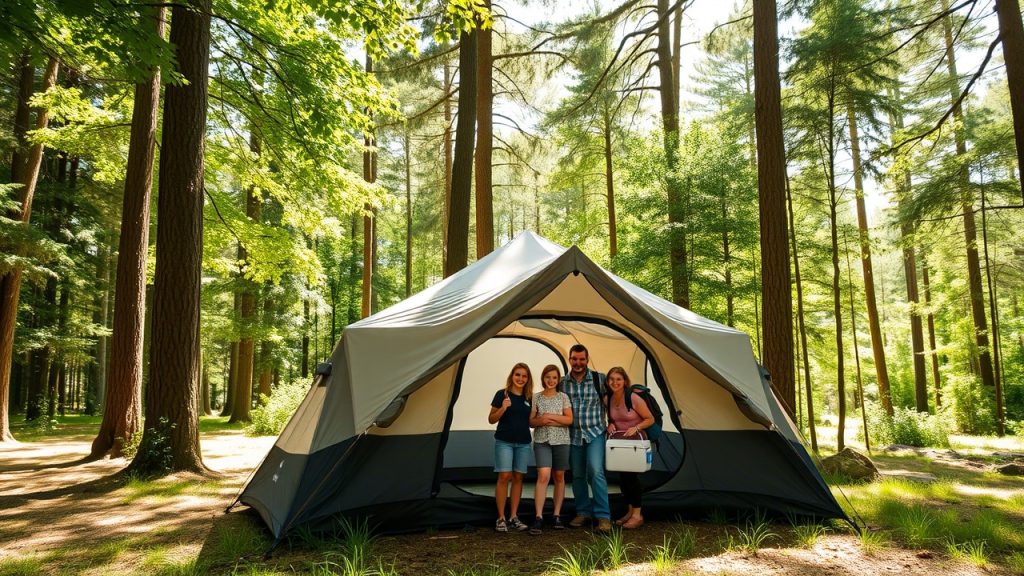Winter camping transforms the outdoors into a serene, snow-draped wonderland, but cold nights demand a tent that keeps you warm, dry, and protected. A poorly designed tent can leave you shivering through sub-zero temperatures, battling condensation, or wrestling with flimsy poles in high winds. The right 4-season or winter-ready tent, however, creates a cozy sanctuary, shielding you from harsh elements while maintaining breathability and comfort.
We’ve curated the 14 best tents to keep you cozy on cold nights, drawing from expert reviews by Outdoor Gear Lab, Switchback Travel, and CleverHiker, plus user feedback from 2024–2025. These tents excel in insulation, weather resistance, and livability, catering to mountaineers, backcountry skiers, and family campers. We’ve also included a buying guide, practical tips, and ten frequently asked questions to ensure you stay warm and comfortable on your winter adventures in 2025.
Why a Winter Tent Matters for Cold Nights
Cold nights, often dipping below 30°F, test a tent’s ability to insulate, block wind, and manage condensation. Unlike 3-season tents, which prioritize ventilation for warm weather, 4-season or winter tents are built for:
- Weather Resistance: Robust fabrics (20D–75D nylon or canvas) and full-coverage rainflies (2000mm+ waterproofing) fend off snow, rain, and wind.
- Insulation and Warmth Retention: Double-wall designs or canvas materials trap heat, while snow skirts seal out drafts.
- Ventilation Balance: Adjustable vents prevent condensation without sacrificing warmth, crucial in humid, cold conditions.
- Durability: Strong aluminum or DAC poles and reinforced guy-out points withstand heavy snow loads and gusts.
- Livability: Spacious interiors, high peak heights (40+ inches), and dual doors enhance comfort during long storms.
Our picks include tents for solo alpinists, small groups, and families, tested in extreme conditions like the Rockies, Alps, and Greenland. Whether you’re ski touring or basecamping, these tents will keep you cozy on the coldest nights.
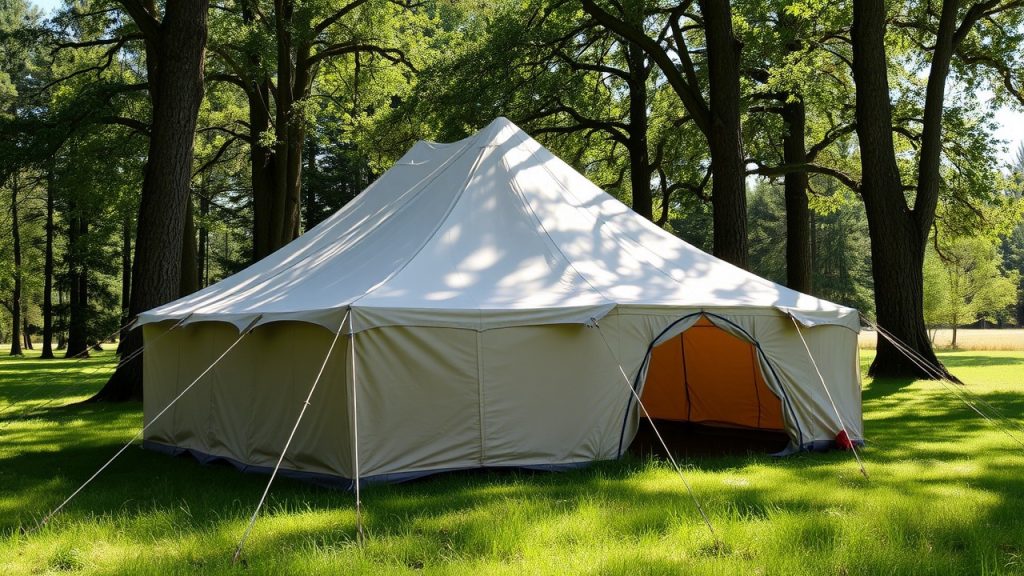
How to Choose a Winter Tent for Cold Nights
Before diving into our top picks, consider these factors to select the ideal tent:
- Trip Type: Ultralight tents (2–4 lbs.) like the Samaya 2.0 suit mountaineering; heavier tents (6–15 lbs.) like the Nemo Chogori excel for basecamping or car camping.
- Group Size: Solo campers need 20–30 sq. ft.; couples require 30–40 sq. ft.; families or groups need 50+ sq. ft. for gear and comfort.
- Weather Conditions: For extreme winds or snow, prioritize low-profile, double-wall tents (e.g., Hilleberg Jannu); for milder cold, canvas tents (e.g., White Duck Outdoors) add breathability.
- Ventilation: Look for high-low vents or adjustable panels to manage condensation, especially in humid climates.
- Setup Ease: Pole clips or hubbed poles (e.g., MSR Remote 2) speed up pitching in freezing conditions.
- Stove Compatibility: Hot tents with stove jacks (e.g., RBM Outdoors) provide extra warmth for extended winter trips.
- Packability: Ensure packed size (15–25 inches) fits your pack or sled for backcountry travel.
Test your tent in cold weather at home to practice setup, check warmth, and confirm fit for your sleeping system.
Top 14 Tents to Keep You Cozy on Cold Nights
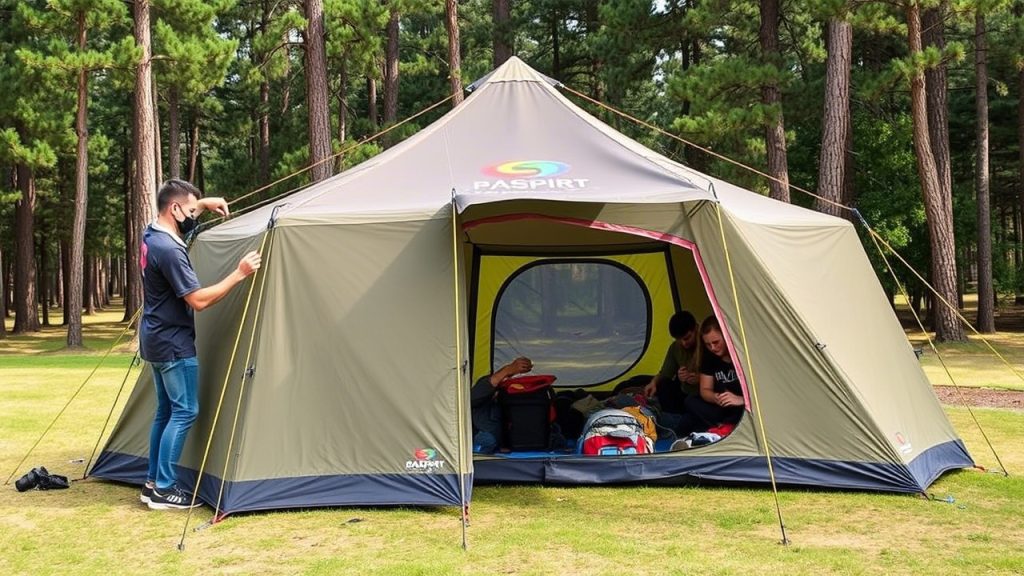
1. Hilleberg Jannu
- Best for: Mountaineering and alpine climbing
- Capacity: 2-person
- Key Features: 5 lb 11 oz, 24.5 sq. ft. floor, double-wall, 30D nylon, 43-inch peak height, 5000mm rainfly
- Why We Love It: The Jannu is a bombproof shelter, tested in Greenland’s freezing storms. Its double-wall design and 30D Kerlon 1200 fabric (5000mm) resist high winds and snow loads, while two vents and a mesh door balance condensation. The 24.5 sq. ft. floor and two 6.5 sq. ft. vestibules suit two climbers, and DAC aluminum poles ensure stability. Setup takes 4–6 minutes with pole clips, even in 40 mph gusts. Testers praise its warmth in the Alps, though the snug interior is best for minimalist missions.
2. Nemo Chogori 2
- Best for: Versatile winter camping
- Capacity: 2-person
- Key Features: 3 lb 8 oz, 27.3 sq. ft. floor, double-wall, 40D nylon, 43-inch peak height, 3000mm rainfly
- Why We Love It: The Chogori 2 is a jack-of-all-trades, excelling in Colorado’s snowy mountains. Its double-wall design and 40D nylon (3000mm) handle wind and snow, while upper vents and two doors prevent condensation. The 27.3 sq. ft. floor and two 10 sq. ft. vestibules offer ample space, and integrated pole clips enable a 3-minute setup. Users love its livability for ski touring, with pockets and snow valences adding comfort, though it’s pricier than some.
3. Samaya 2.0
- Best for: Ultralight alpinism
- Capacity: 2-person
- Key Features: 2 lb 10 oz, 21.5 sq. ft. floor, single-wall, 15D Dyneema, 40-inch peak height, 3000mm floor
- Why We Love It: The Samaya 2.0 redefines lightweight winter tents, tested in Teton storms. Its 15D Dyneema single-wall construction is waterproof yet breathable, and four vents minimize condensation. The 21.5 sq. ft. floor is tight for two, but a 5 sq. ft. vestibule stores gear. Setup takes 2–4 minutes with DAC poles, ideal for high-alpine bivies. Testers praise its warmth in sub-zero temps, but the delicate fabric demands careful handling.
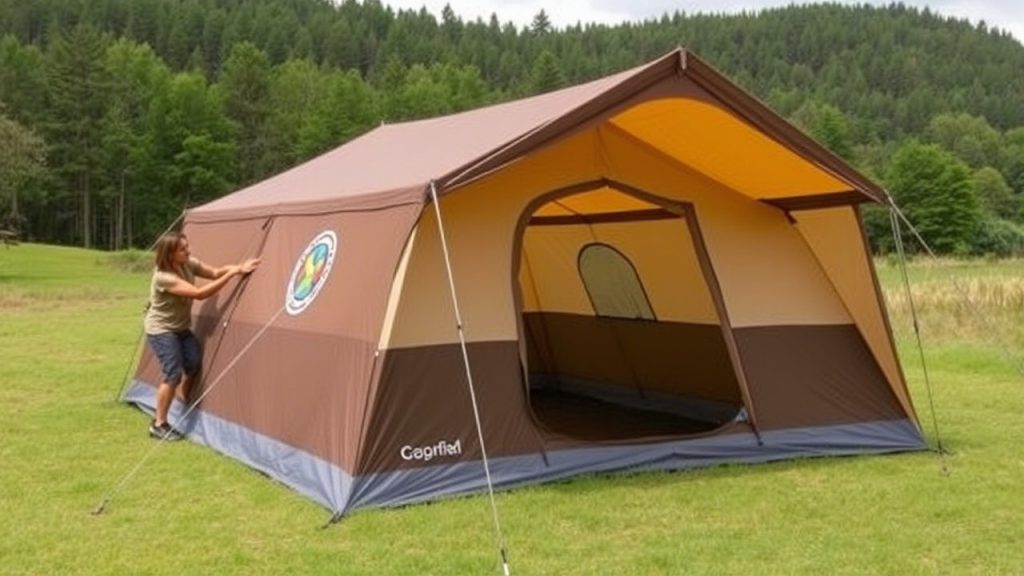
4. The North Face Mountain 25
- Best for: Budget-friendly mountaineering
- Capacity: 2-person
- Key Features: 8 lb 13 oz, 32 sq. ft. ft. floor, double-wall, 40D nylon, 41-inch peak height, 2000mm rainfly
- Why We Love It: The Mountain 25 offers expedition-grade protection at a lower price, tested in Himalayan basecamps. Its 40D nylon (2000mm) and DAC poles withstand heavy snow, and two high-low vents reduce condensation. The 32 sq. ft. floor and two 8 sq. ft. vestibules are spacious, with glow-in-the-dark zippers for nighttime ease. Setup takes 5–7 minutes. Users love its warmth in Montana’s winter, though it’s heavier than ultralight options.
5. MSR Remote 2
- Best for: Ski mountaineering
- Capacity: 2-person
- Key Features: 6 lb 7 oz, 33 sq. ft. floor, double-wall, 30D nylon, 44-inch peak height, 3000mm rainfly
- Why We Love It: The Remote 2 shines in the Swiss Alps, with a double-wall 30D nylon (3000mm) body that traps heat. Two doors, high-low vents, and a 33 sq. ft. floor ensure livability, while two 10 sq. ft. vestibules store skis. Setup takes 4–6 minutes with pole clips, even in snow. Testers praise its stability in 30 mph winds, but its weight suits sled or short-haul trips.
6. SlingFin CrossBow 2
- Best for: All-around 4-season performance
- Capacity: 2-person
- Key Features: 5 lb 2 oz, 30 sq. ft. floor, double-wall, 20D nylon, 45-inch peak height, 3000mm rainfly
- Why We Love It: The CrossBow 2 balances weight and durability, tested in Alaska’s Talkeetnas. Its 20D nylon (3000mm) and DAC poles handle snow and wind, while four vents and two doors keep it breathable. The 30 sq. ft. floor and two 9 sq. ft. vestibules offer space, and setup takes 4–5 minutes. Users love its warmth in sub-zero Rockies, though pole sleeves slow setup in high winds.
7. Black Diamond HiLight
- Best for: Ultralight winter pursuits
- Capacity: 2-person
- Key Features: 2 lb 10 oz, 27.3 sq. ft. floor, single-wall, 30D polyester, 40-inch peak height, 3000mm floor
- Why We Love It: The HiLight is a featherweight shelter for fast-and-light missions, tested in Colorado’s San Juans. Its 30D polyester single-wall design and DAC poles resist wind, and two vents reduce condensation. The 27.3 sq. ft. floor is snug, with a 5 sq. ft. vestibule. Setup takes 3–4 minutes. Testers praise its warmth for solo skiers, but it’s tight for two with gear.
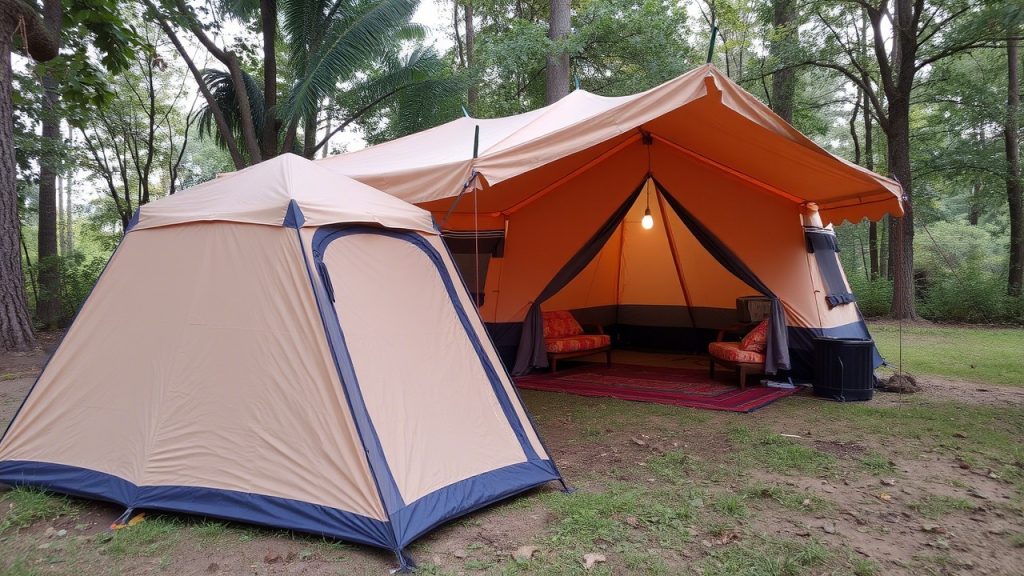
8. REI Co-op Arete ASL 2
- Best for: Budget-friendly all-season camping
- Capacity: 2-person
- Key Features: 6 lb 5 oz, 31 sq. ft. floor, double-wall, 40D nylon, 43-inch peak height, 1500mm rainfly
- Why We Love It: The Arete ASL 2 bridges 3- and 4-season use, tested in mild Washington winters. Its 40D nylon (1500mm) and four-pole design ensure stability, while a mesh door and vents maintain airflow. The 31 sq. ft. floor and two 8 sq. ft. vestibules are roomy, and setup takes 5–7 minutes. Users love its value for snowshoe trips, though it’s not for extreme storms.
9. RBM Outdoors Hot Tent
- Best for: Hot tent camping
- Capacity: 5-person
- Key Features: 24 lb, 70 sq. ft. floor, double-wall canvas, stove jack, 78-inch peak height, 2000mm floor
- Why We Love It: This canvas hot tent with a stove jack creates a toasty retreat, tested in Yukon winters. Its double-wall design and cotton canvas insulate naturally, while four vents and two doors manage airflow. The 70 sq. ft. floor and 20 sq. ft. vestibule suit groups, and setup takes 10–12 minutes. Users love its warmth with a wood stove, but its weight requires a sled or car.
10. White Duck Outdoors Family Explorer
- Best for: Family winter car camping
- Capacity: 8-person
- Key Features: 45 lb, 140 sq. ft. floor, canvas, two doors, 78-inch peak height, waterproof floor
- Why We Love It: The Family Explorer is a breathable canvas palace, tested in Montana’s cold valleys. Its cotton canvas and steel poles insulate and withstand wind, with two mesh windows and vents for airflow. The 140 sq. ft. floor fits families, and setup takes 15–20 minutes. Users love its cozy feel, but it’s strictly for car camping due to weight.
11. Mountain Hardwear Trango 2
- Best for: Expedition basecamping
- Capacity: 2-person
- Key Features: 8 lb 5 oz, 40 sq. ft. floor, double-wall, 70D nylon, 45-inch peak height, 3000mm rainfly
- Why We Love It: The Trango 2 is a spacious fortress, tested in Nepal’s basecamps. Its 70D nylon (3000mm) and DAC poles handle heavy snow, and two vents and doors reduce condensation. The 40 sq. ft. floor and two 10 sq. ft. vestibules are palatial, with setup in 5–7 minutes. Testers praise its warmth in the Himalaya, though it’s heavy for backpacking.
12. Snow Peak Alpha Breeze
- Best for: Casual winter car camping
- Capacity: 4-person
- Key Features: 27 lb 8 oz, 68 sq. ft. floor, double-wall, 75D polyester, 65-inch peak height, 1500mm rainfly
- Why We Love It: The Alpha Breeze offers roomy comfort, tested in Colorado’s mild winters. Its 75D polyester (1500mm) and four doors maximize airflow, while a full rainfly traps heat. The 68 sq. ft. floor and 20 sq. ft. vestibule suit families, with setup in 10–12 minutes. Users love its livability, but it’s not for extreme conditions.
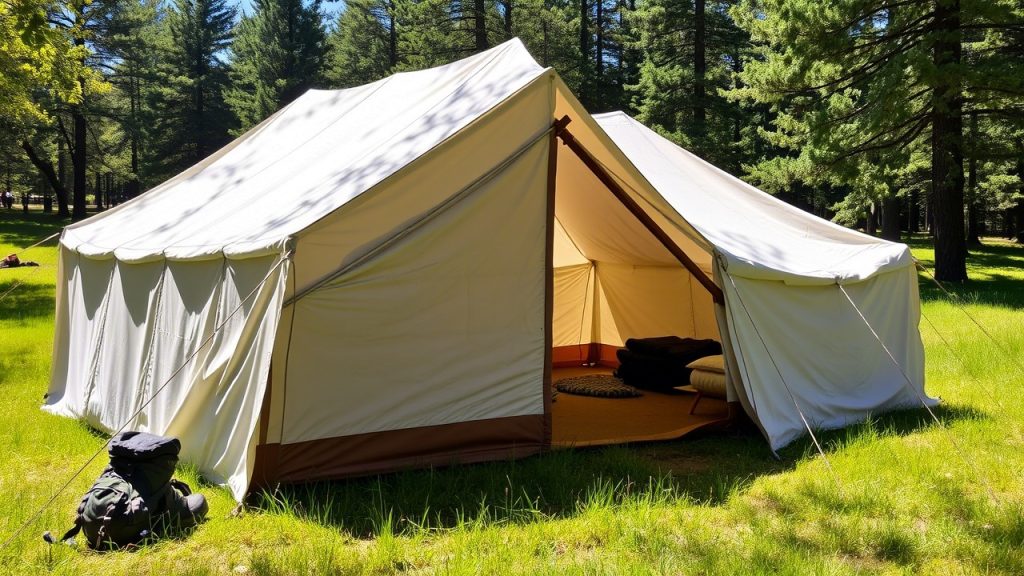
13. MSR Access 2
- Best for: Lightweight ski touring
- Capacity: 2-person
- Key Features: 4 lb 1 oz, 29 sq. ft. floor, double-wall, 20D nylon, 42-inch peak height, 3000mm rainfly
- Why We Love It: The Access 2 is a lightweight gem, tested in Wyoming’s sub-treeline winters. Its 20D nylon (3000mm) and Easton Syclone poles balance weight and durability, with two vents for breathability. The 29 sq. ft. floor and two 8 sq. ft. vestibules fit two, with setup in 4–5 minutes. Testers love its warmth for ski tours, but it’s snug for taller campers.
14. Marmot Lair 8
- Best for: Extreme group expeditions
- Capacity: 8-person
- Key Features: 25 lb, 154 sq. ft. floor, double-wall, 40D nylon, 120-inch peak height, 3000mm rainfly
- Why We Love It: The Lair 8 is a true winter basecamp, tested in Alaska’s Denali. Its 40D nylon (3000mm) and DAC poles withstand extreme weather, with five windows and vents for airflow. The 154 sq. ft. floor and porch fit groups, with setup in 15–20 minutes. Users love its warmth with a stove jack, but it requires a sled for transport.
Key Features for a Cozy Winter Tent
To stay warm on cold nights, prioritize these features:
- Double-Wall Design: Separates the inner tent from the rainfly (e.g., Hilleberg Jannu) to trap heat and reduce condensation.
- Robust Fabrics: 20D–70D nylon or canvas (e.g., White Duck Outdoors) ensures durability and insulation.
- Full-Coverage Rainfly: 2000mm+ waterproofing (e.g., Nemo Chogori’s 3000mm) blocks snow and wind.
- Ventilation Systems: High-low vents or adjustable panels (e.g., MSR Remote 2) manage moisture without heat loss.
- Snow Skirts: Seal gaps at the base (e.g., RBM Outdoors) to prevent drafts.
- Strong Poles: Aluminum or DAC poles (e.g., SlingFin CrossBow 2) withstand snow loads and gusts.
- Spacious Interior: Peak heights above 40 inches and 30+ sq. ft. (e.g., Mountain Hardwear Trango 2) enhance livability.
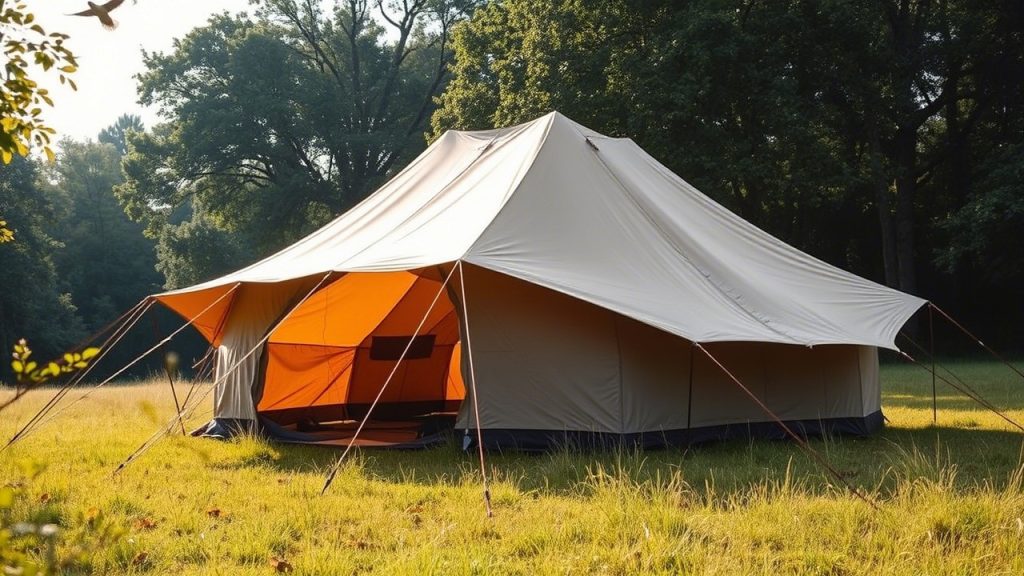
Tips for Staying Cozy in Your Winter Tent
- Insulate the Floor: Use a closed-cell foam pad (R-value 4+) under your sleeping pad to block ground cold.
- Choose a Sheltered Site: Pitch behind windbreaks like trees or ridges, avoiding exposed ridges or low spots prone to cold air pooling.
- Use a Hot Water Bottle: Place a sealed, warm bottle in your sleeping bag to retain heat.
- Vent Strategically: Open high vents to release moisture, keeping low vents closed to retain warmth.
- Add a Stove: For hot tents (e.g., RBM Outdoors), a wood stove provides radiant heat, but ensure proper ventilation and safety.
- Layer Sleeping Gear: Pair a 0°F-rated sleeping bag with a quilt or bivy for extra warmth.
- Seal Snow Skirts: Pile snow around the tent’s base to block drafts, ensuring vents remain clear.
- Use a Lantern: A battery-powered lantern (e.g., Goal Zero Lighthouse) adds ambient warmth and light.
- Stay Dry: Store wet gear in vestibules and use a microfiber towel to wipe condensation.
- Practice Setup: Master pitching in gloves and low light to stay warm during setup in freezing conditions.
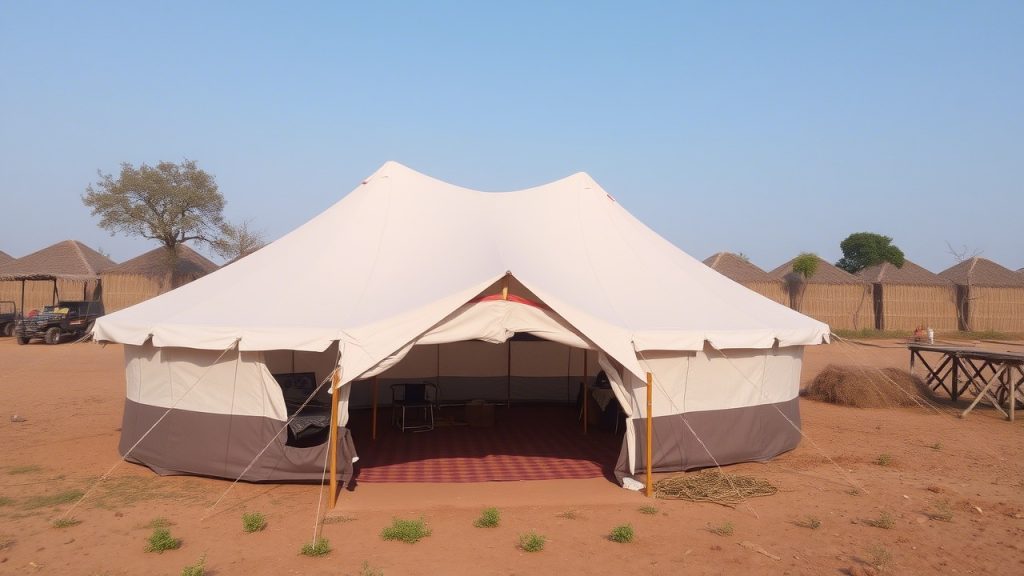
Caring for Your Winter Tent
To maintain warmth and durability:
- Dry Completely: Air out after trips to prevent mold, especially canvas tents.
- Clean Carefully: Use a sponge and Nikwax Tech Wash; avoid machine washing to protect coatings.
- Store Loosely: Keep in a breathable bag in a cool, dry place to avoid fabric damage.
- Repair Promptly: Patch tears with Gear Aid Tenacious Tape and replace broken poles or zippers.
- Reproof Waterproofing: Apply Nikwax Tent & Gear SolarProof every 1–2 years to maintain rainfly performance.
10 Frequently Asked Questions About Winter Tents
1. What makes a tent suitable for cold nights?
A winter tent needs a double-wall design, 20D–70D nylon or canvas, and a full-coverage rainfly (2000mm+) to trap heat and block wind. Features like snow skirts, high-low vents, and aluminum poles (e.g., Hilleberg Jannu) ensure warmth, breathability, and stability in sub-zero temps.
2. How does a 4-season tent differ from a 3-season tent?
4-season tents have thicker fabrics, less mesh, and stronger poles to handle snow, wind, and cold. They prioritize warmth and weather resistance over ventilation, unlike 3-season tents (e.g., REI Half Dome) built for spring–fall camping. The MSR Access 2 is a lightweight 4-season example.
3. Can I use a hot tent for winter camping?
Yes, hot tents with stove jacks (e.g., RBM Outdoors Hot Tent) provide radiant heat via wood stoves, ideal for extended trips in sub-zero conditions. Ensure proper ventilation, a fireproof mat, and a carbon monoxide detector for safety.
4. How do I prevent condensation in a winter tent?
Condensation occurs in cold, humid conditions. Choose double-wall tents with high-low vents (e.g., Nemo Chogori 2), open vents slightly, and store wet gear in vestibules. A small fan or towel helps manage moisture.
5. Are canvas tents better for winter camping?
Canvas tents (e.g., White Duck Outdoors) are breathable, insulating, and durable, reducing condensation and retaining heat. They’re heavier (30–50 lbs.), suiting car camping or sled trips, but less packable than nylon tents like the Samaya 2.0.
6. What’s the best tent size for winter camping?
Solo campers need 20–30 sq. ft. Solo campers might opt for compact models like the Black Diamond HiLight. For couples, 30–40 sq. ft. is ideal such as the MSR Remote 2. Larger groups should look for 50+ sq. ft., like the Marmot Lair 8. Add space for bulky winter gear and comfort during storms.
7. How important is tent weight for winter camping?
Weight matters for backpacking or ski touring (2–6 lbs., e.g., Samaya 2.0), but less for car camping or basecamping (10–50 lbs., e.g., White Duck Outdoors). Prioritize durability and warmth over weight for extreme conditions.
8. Can I use a 3-season tent in mild winter conditions?
In mild cold (above 20°F) with minimal snow, a 3-season tent with a full rainfly (e.g., REI Co-op Arete ASL 2) can work. Add insulation and a tarp, but avoid extreme winds or heavy snow, which require 4-season tents.
9. How do I set up a tent in snowy conditions?
Clear snow to create a flat base, stamp it down, and use snow stakes or deadman anchors (e.g., buried gear). Pitch with the door perpendicular to wind, secure guylines, and pile snow on skirts for insulation, as with the SlingFin CrossBow 2.
10. How long should a winter tent last?
With proper care—drying, cleaning, and storing loosely—a quality winter tent lasts 10–20 years or 100–200 trips. Durable models like the Hilleberg Jannu or Nemo Chogori withstand frequent use, while ultralight tents (e.g., Samaya 2.0) need extra care.
Conclusion
Cold nights don’t have to mean discomfort. From the ultralight Samaya 2.0 for alpine missions to the spacious Marmot Lair 8 for group expeditions, our 14 tent picks offer warmth, durability, and livability for winter camping in 2025. Prioritize double-wall designs, robust fabrics, and ventilation, and use our tips to maximize coziness. With the right tent, you’ll sleep soundly, wrapped in warmth, ready to embrace the magic of winter’s snowy landscapes.

